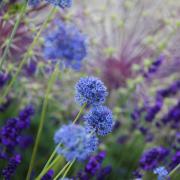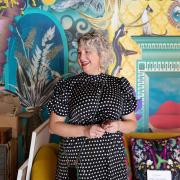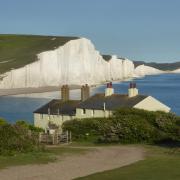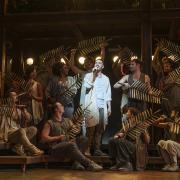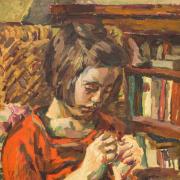A new Turner exhibition at Brighton Pavilion centres around a watercolour by the artist, painted when he and the resort were the height of fashion

A Turner watercolour is the centrepiece of an exhibition at Brighton Pavilion. Brighthelmston, Sussex (1824) was bought last year at auction at Christies, New York by the Royal Pavilion & Museums Service, with funding from the Heritage Lottery Fund, Art Fund and the Royal Pavilion and Museums Foundation.
Turner in Brighton features a range of works by the artist, including watercolours, oil paintings, drawings and sketchbooks. There are also personal effects like a makeshift watercolour palette and calling card. Other works by John Constable, William Daniell and John Nash put the artist’s works into their historic and artistic context.
In 1796 Turner first came to Brighton, but he didn’t become familiar with the town until the 1820s. By 1824, when he painted Brighthelmston, Brighton was firmly established as a fashionable watering place, and many of the landmarks we still enjoy today had recently been completed, such as the Royal Pavilion and the Albion Hotel. Turner was also at the peak of his fame, but no stranger to controversy. At the time of his visit in the ‘20s, he was working on a series called Picturesque Views on the Southern Coast of England (1814-1826).
Two of the oil paintings by Turner - The Chain Pier, Brighton and Brighton Beach, with the Chain Pier in the Distance, from the West are on loan from the Tate, as well as four of the artist’s sketchbooks containing drawings of the area. The exhibition also features loans from the Victoria and Albert Museum and private collections, along with works from the Royal Pavilion & Museums’ own collection.
The Pavilion makes a fitting venue for the exhibition as Turner was a close friend of its architect John Nash. He also painted The Battle of Trafalgar as a commission from George IV, the only patronage he received from the monarchy, despite much courting.
Lord Egremont, who had a house in Brighton, was a more reliable patron and friend.
Ian Warrell, a Turner expert and curator of the exhibition, said: “Turner’s visits to Brighton were always short, and so his experience of the seaside resort was probably not much different from that of most tourists today, focusing almost exclusively on the sights of its seafront. This makes it all the more remarkable that he could produce such a powerful image of Brighton. Though it is quite small, his watercolour is packed with details that provide a snapshot of the town and its attractions as it was in 1824. Visitors to the show will have the chance to recapture the excitement of the fashionable and practical innovations that were in the process of transforming the appearance of the former fishing village into the resort we know today.”
The exhibition is in the Prince Regent Gallery on the first floor of the Pavilion and contains 19 works by Turner and seven works by Constable.
Turner in Brighton is at the Royal Pavilion, Brighton, BN1 1EE until 2 March 2014. Open daily, 10am to 5.15pm (last admission 4.30pm)
---------------------------------------------------------------
Art highlights
Now until 24 February - Clare Leighton: Working Life
Best known for her wood engravings illustrating agrarian life in England, Europe and the American South, Clare Leighton (1898-1989) produced designs for Wedgwood ceramics, as well as writing and illustrating books. This exhibition features key examples from throughout her career.
Pallant House, Chichester: 01243 774557
***
Now until 9 March - Subversive Design - Brighton Museum & Art Gallery.
From high fashion to high street consumerism, cheeky ceramics to controversial chairs, provocative lamps to ‘rubbish’ jewellery, this major exhibition subverts your preconceptions and challenges your relationship with objects you use on a daily basis.






